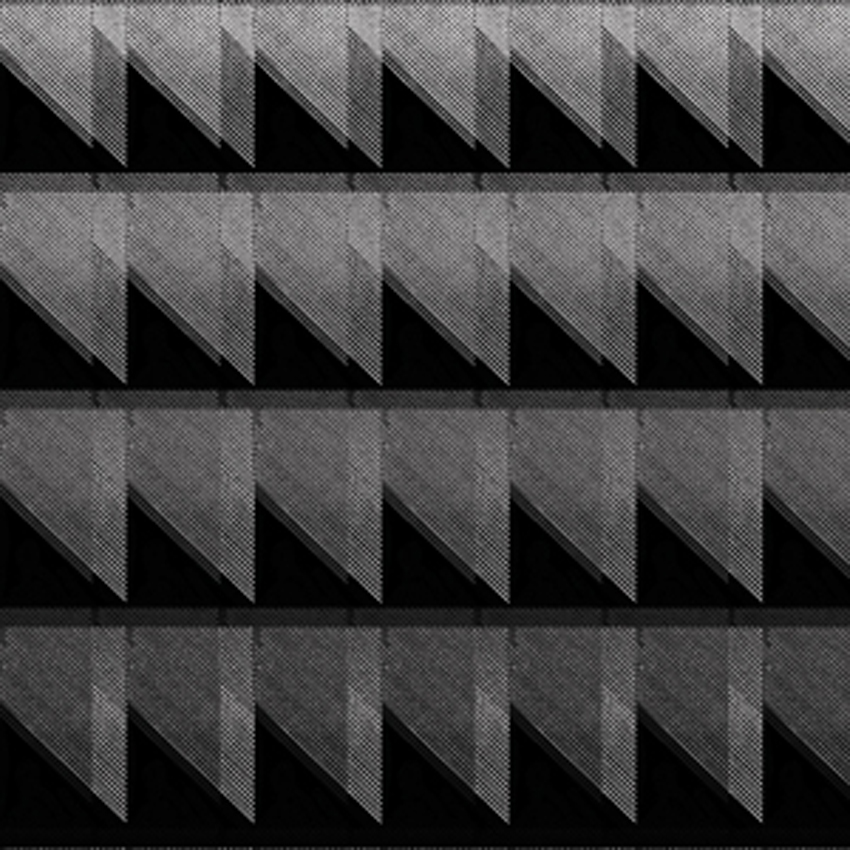Eliane Radigue, "Adnos I-III"
 There has been an avalanche of fine dispatches from Eliane Radigue's voluminous vault in recent years, which both pleases and overwhelms me, as I want to hear them all and cannot hope to keep up.  Adnos is one of the latest of those great albums and offers the added appeal of being a major, decade-spanning, formative work as well.  Originally composed between 1973 and 1980, these three lengthy pieces are stylistic precursors to Radigue's minimal drone epicTrilogie de la Morte (widely regarded to be her masterpiece). While Adnos is not quite on the same level as its similarly ambitious successor, it certainly comes damn close.
There has been an avalanche of fine dispatches from Eliane Radigue's voluminous vault in recent years, which both pleases and overwhelms me, as I want to hear them all and cannot hope to keep up.  Adnos is one of the latest of those great albums and offers the added appeal of being a major, decade-spanning, formative work as well.  Originally composed between 1973 and 1980, these three lengthy pieces are stylistic precursors to Radigue's minimal drone epicTrilogie de la Morte (widely regarded to be her masterpiece). While Adnos is not quite on the same level as its similarly ambitious successor, it certainly comes damn close.
The Adnos trilogy is quite an interesting suite historically, as it began fairly early in Radigue's career–not "feedback era/assistant to Pierre Henry" early, but not long after Radigue started making music using a Buchla synthesizer in a NYC studio that she shared with the similarly amazing Laurie Spiegel.  The first part of Adnos was originally performed at Mills College in 1974 after Eliane was invited to play there by Robert Ashley (for an "embarrassingly low" $250).  That occasion proved to be quite fateful, as some visiting students turned Eliane onto Tibetan Buddhism, which wound up having a profound influence on much of her future work (both thematically and structurally).  Despite that revelation, the two sequels (spanning another seven years) still feel very much like variations on the original theme and seem like they could have easily been composed at the same time.  Also, the first "Adnos" actually seems more transcendent and meditative than its successors, which are a bit more experimental in nature.
Despite the fact that this is box set containing a somewhat lengthy booklet, very little information is divulged regarding how two of these three hour-long epics were created.  Amusingly, however, very specific information is provided regarding "Adnos II," the most aberrant and dissonant segment of the trilogy (Arp synthesizer, 3 1/4 tape decks, and a three-octave filter).  It is probably a decent bet to assume that "Adnos I" and "Adnos III" were the fruits of quite similar set-ups, though the presence of recognizable synthesizer tones is often quite hard to detect.  In any case, these three pieces all roughly follow a similar stylistic and compositional trajectory: a minimal, droning electronic hum glacially transforms into something more as subtle oscillations and harmonies gradually snowball.  Sort of like a butterfly gradually emerges from a chrysalis, except that the butterfly is sometimes complex and dark rather than pretty.
Aside from parts of the aforementioned and divergent "Adnos II," these pieces present exactly what I have grown to expect from Radigue: entrancing, slowly unfolding beauty and a timeless sonic purity delivered with almost-superhuman patience and attention to nuance.  For the most part, there are few textures or stylistic indicators that tie Adnos to any fixed period in time: humming feedback will always sound like humming feedback.  Consequently, the very simple and pure "Adnos I" still sounds like the very cutting edge of drone in 2014, despite being constructed four decades ago (very prescient).  Also, that trait goes a long way towards explaining why it took so long for Radigue's work to be fully embraced–she was very much ahead of her time..or possibly removed from time altogether (also, it probably did not help at all that she was a woman in a very male-dominated field).  The other two pieces do not quite maintain that illusion of timelessness as fully though.  While "Adnos III" is probably my favorite part of the trilogy, its plinking, phase-shifting dissonances definitely feel temporally related to work of some of Eliane's contemporaries.
"Adnos II" is, unsurprisingly, the least "eternal" of the trilogy, as it is extremely hard to avoid sounding like A Very Serious Electronic Composer From The 1960s Or '70s when you are making abstract music with an early synthesizer: the timbres are inherently artificial and dated-sounding (albeit in a pleasantly retro-futurist way).  That makes for something of a polarizing work, as I have seen others proclaim that it the highlight of this set, while it is personally my least favorite.  I still like it though and can easily see its appeal, as there is a lengthy passage of queasy dissonance and beeps that sometimes sounds quite beautiful and sometimes resembles the cold horror of being adrift in space.  The latter is not a feeling that I generally get from Eliane Radigue albums, so that makes for a unique, if somewhat uncharacteristic, entry into Elaine oeuvre.
Naturally, I have a few small gripes (I am chronically dissatisfied), but they are ultimately fairly trivial.  For example, I would have loved some more information about both Radigue and the pieces themselves and I am very curious about what Rhys Chatham had to say in his liner notes for the original 2002 issue (on Table of Elements).  However, the stuff that is included instead is very cool in its own right (old flyers, a handwritten letter from Arthur Russell inviting Radigue to play at The Kitchen, etc.).
Also, I found 3 1/2 hours of very similar sounding material to be a bit exhausting and I think each of these pieces would be better appreciated as a stand-alone album.  That said, there is absolutely nothing stopping me from listening to each piece as a stand-alone album (they are all on separate discs) and it is certainly convenient to not have to buy three separate releases.  In any case, this is a great set.  While I would probably not categorize Adnos as one of Radigue's masterpieces, I certainly would not argue with Important's claim that this is "one of the high points of modern minimal electronic composition."  It is exactly that–it is just that Radigue is also responsible for some even higher points than this one.
Samples:
 
 



